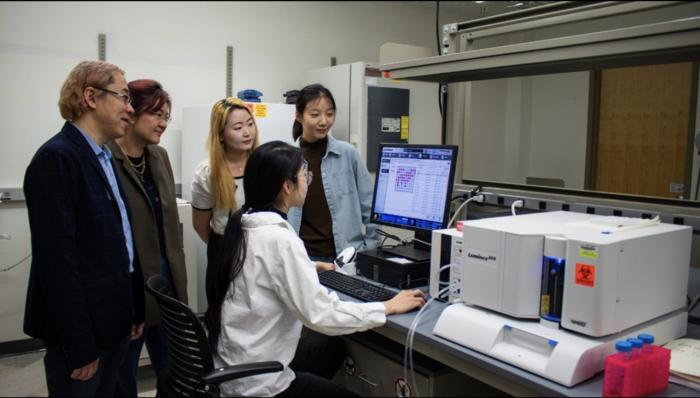Researchers at the University of Michigan have pioneered a groundbreaking mathematical model elucidating the intricate interplay between circadian rhythms and the efficacy of medications that modulate dopamine levels in the brain. This innovative work, emerging from the intersection of computational biology and neuropharmacology, unveils how the timing of drug administration in relation to the body’s internal clock can dramatically influence therapeutic outcomes. These insights open new avenues for chronotherapeutics, wherein medications are scheduled to align optimally with biological rhythms to maximize their benefits.
Central to this study is the focus on dopamine reuptake inhibitors (DRIs), a class of drugs widely used to treat various neurological and psychiatric conditions, including narcolepsy and depression. DRIs function by preventing the reuptake of dopamine neurotransmitters, thereby increasing extracellular dopamine availability and enhancing neuronal communication. Though effective, the temporal dynamics of their impact have remained underexplored until now. The University of Michigan team developed a sophisticated model using modafinil—a well-characterized DRI—as their prototype to simulate dopamine fluctuations under different dosing schedules.
The research highlights the critical observation that dopamine levels naturally oscillate in accordance with circadian rhythms, which are governed by an intricate network of clock genes and proteins orchestrating physiological processes over roughly 24-hour cycles. By integrating these biological oscillations into their mathematical framework, the investigators demonstrated that administering DRIs during the circadian trough—the period when endogenous dopamine concentrations are at their lowest—elicits a more sustained and stable elevation of dopamine. This contrasts sharply with dosing during periods of naturally high dopamine, which triggers transient spikes followed by rapid declines, potentially leading to diminished therapeutic effects.
In addition to circadian rhythms, the model incorporates an ultradian rhythm component, representing shorter cycles occurring multiple times throughout the day that also modulate dopamine levels. Although the mechanistic underpinnings of these ultradian rhythms remain an active area of inquiry, the researchers’ simulations suggest that DRIs not only affect daily dopamine oscillations but also extend the period of these faster ultradian cycles. This finding adds a novel dimension to understanding dopamine regulation and could catalyze further experimental investigations into these relatively new chronobiological phenomena.
By elucidating the temporal pharmacodynamics of DRIs, the mathematical model provides a powerful predictive tool for clinicians aiming to optimize drug dosing regimens. This represents a significant advancement beyond conventional pharmacotherapy, which often neglects the timing of administration relative to endogenous biological clocks. The potential to tailor drug delivery schedules to individual circadian profiles promises to enhance effectiveness, mitigate side effects, and improve patient quality of life across a spectrum of dopamine-related disorders such as ADHD, depression, and fatigue.
Co-author Tianyong Yao, an undergraduate researcher specializing in mathematics, emphasized the translational value of the model, noting that while it cannot replace empirical clinical trials, it can significantly guide experimental design by pinpointing promising dosing windows and concentrations to test in vivo. This approach exemplifies the growing synergy between computational modeling and experimental neuroscience, harnessing quantitative frameworks to streamline and refine therapeutic strategies.
The model’s use of modafinil data underscores its practical relevance, as this particular DRI is already clinically approved for narcolepsy treatment. Thus, the findings are poised for near-term applications in clinical protocols to enhance modafinil’s therapeutic profile. Moreover, the adaptability of the model to other dopamine-targeting drugs suggests a broad applicability, including for conditions such as Parkinson’s disease and substance use disorders, where dopamine dysregulation is a core pathological feature.
Senior author Ruby Kim, a postdoctoral fellow at Michigan Medicine, accentuated the importance of integrating circadian biology into pharmacological research. She pointed out that existing literature offers limited insight into time-of-day effects on dopamine pharmacokinetics and dynamics, highlighting the novel contribution of their computational approach. This interdisciplinary study thus fills a critical knowledge gap by connecting temporal molecular rhythms with clinical pharmacology.
From a mechanistic perspective, the model incorporates variables representing dopamine synthesis, release, reuptake, and degradation, all modulated by circadian clock-controlled processes. This comprehensive mathematical representation allows simulation of extracellular dopamine concentrations over time, offering detailed predictions of drug action profiles under diverse temporal scenarios. Such granular modeling also facilitates exploration of complex interactions between natural biological rhythms and pharmacological agents, advancing both theoretical understanding and practical applications.
This research stands at the frontier of chronopharmacology, a field poised to revolutionize personalized medicine by aligning drug treatment with biological timekeeping. As the scientific community continues to unravel the complexities of circadian and ultradian rhythms, tools like this mathematical model represent vital stepping stones toward precision therapeutics that harness nature’s intrinsic timing mechanisms.
In sum, the University of Michigan’s contribution not only illuminates the nuanced relationship between dopamine dynamics and drug timing but also sets the stage for a paradigm shift in how clinicians approach medication schedules. By acknowledging and leveraging the body’s internal chronobiological landscape, this work promises to enhance therapeutic efficacy and patient outcomes in myriad dopamine-related disorders, marking a major stride forward in both neuroscience and pharmacology.
Subject of Research: Dopamine rhythms and timing of dopamine reuptake inhibitors
Article Title: Mathematical modeling of dopamine rhythms and timing of dopamine reuptake inhibitors
News Publication Date: 25-Sep-2025
Web References: PLOS Computational Biology Article DOI: 10.1371/journal.pcbi.1013508
References: T. Yao and R. Kim, PLOS Computational Biology 2025, (DOI: 10.1371/journal.pcbi.1013508)
Image Credits: T. Yao and R. Kim, PLOS Computational Biology 2025, used under a CC BY license
Keywords: Computational biology, Mathematical biology, Dopamine, Chronotherapeutics, Circadian rhythms, Dopamine reuptake inhibitors, Modafinil, Neuropharmacology, Ultradian rhythms, Personalized medicine
Tags: chronotherapeutics and medication timingcircadian rhythms and drug dosingcomputational biology in pharmacologydopamine modulation and therapeutic outcomesdopamine reuptake inhibitors researchenhancing treatment for neurological conditionsmathematical modeling in medicineneuropharmacology and circadian biologyoptimizing drug effectiveness with biological rhythmsoscillating dopamine levels and healthtiming of medication administrationUniversity of Michigan neuroscience study






